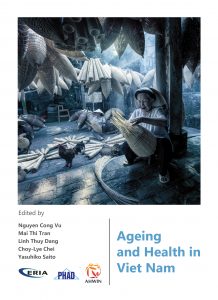RESEARCHERS
Grace T. Cruz, Population Institute, University of the Philippines, Philippines
Vu Cong Nguyen, Institute of Population, Health and Development, Vietnam
Yasuhiko Saito, Population Research Institute, Nihon University, Japan
Mankind has achieved a remarkable level of longevity, as demographic and health transitions proceed. Even in areas where people still suffer from high child mortality rates, it is expected that the continued efforts of the international community will lead to a decline in the mortality rate, which in turn will lead those populations to begin aging. As a result, the number of senior citizens in societies around the globe will grow in the near future.
Longevity is considered to be one of the greatest successes of humankind, but can we call it “success” if longevity leads to restraints on the vibrancy or vitality of humanity? In aged societies, ensuring that older people participate in social activities is indispensable to keeping societies vibrant. Aged societies will certainly face a labor shortage, so even older people will be expected to join the labor force in such societies. Without healthy and active aging, human society will not be able to sustain its vibrancy. The concept of “healthy life expectancy” is convenient as an indicator of healthy and active aging. It can be computed as the number of years people are expected to live in good health. For an extreme example, if healthy life expectancy was the same as total life expectancy, that would mean all people can live in good health until the exact time of death. This status where healthy life expectancy is almost the same as total life expectancy is often termed the “rectangularization of the survival curve” or “pin pin korori” in Japanese.
This longitudinal study of seniors is designed to trace individuals who are aged 60 years or over for a number of years and to analyze the factors that contribute to a longer healthy life. In ASEAN member states, a few such studies have been implemented, but the factors for a healthy older life have not been well investigated. People aged 60 or above will be selected randomly (multistage random sampling)for this study from all over the Philippines and Viet Nam, with a sample size of 6,000 in each country. The first data collection will be conducted in the latter half of 2018, and the second wave survey will be in the latter half of 2020. The questionnaire used in this survey includes questions similar to those in the HRS (Health and Retirement Survey), which is conducted by the National Institute on Aging (USA), so that the result of this survey can be compared with other countries. It includes questions on demographic characteristics, living arrangements, subjective health status, and so on.



